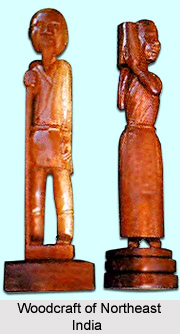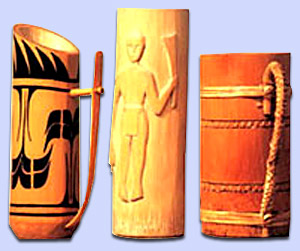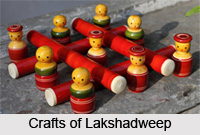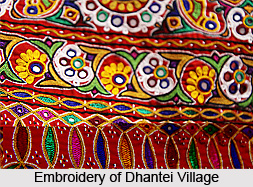 Woodcraft of northeast India has been a long tradition that bears the marks of tribal art. The practice of woodcarving and associated crafts is part of a long tradition among a number of tribal communities in Arunachal Pradesh.
Woodcraft of northeast India has been a long tradition that bears the marks of tribal art. The practice of woodcarving and associated crafts is part of a long tradition among a number of tribal communities in Arunachal Pradesh.
The main areas for woodcarving and woodcraft in the North-eastern states are the Wancho area of Tirap district. The Wancho woodcarvings can be classified under three main categories. The first are those connected with headhunting; the second with the decoration of the Morungs of men`s communal houses and the third with the funerary images of different animals. The Monpas, Mombas, Shedukpens, Khambas and Bugums produce different types of masks, often painted with colours. The Khamptis especially are best known for their beautiful wooden images of Lord Buddha.
One can also find carpenters in northeast India working with their primitive tools within some of the tribal communities, namely the Monpas, Noctes, Wanchos and Tangas. These craftsmen churn out articles of daily use as well as furniture, although of crude workmanship. Nagas are excellent woodcarvers and they make use of simple rudimentary tools and implements such as the local dao, hand drill and chisel, skilled craftsmen produce great works of art that locals adorn in village gates and house posts as well as objects of utility like the common wooden dish. One of the finest specimens that epitomize the competency of the Naga craftsman is to be found at Shangnyu village in Mon District. The work of art at Shangnyu comprises of a massive wooden panel that has carvings depicting objects of art as well as those of ritual and service value.
Woodcraft of north-eastern India has now been commercialized and craftsmen have been able to use their traditional skills to generate considerable income for themselves. The Diezephe craft village in Dimapur district is a good example of woodcraft communities that are concentrated in different villages of the district. Here the major source of income is from woodcraft.






